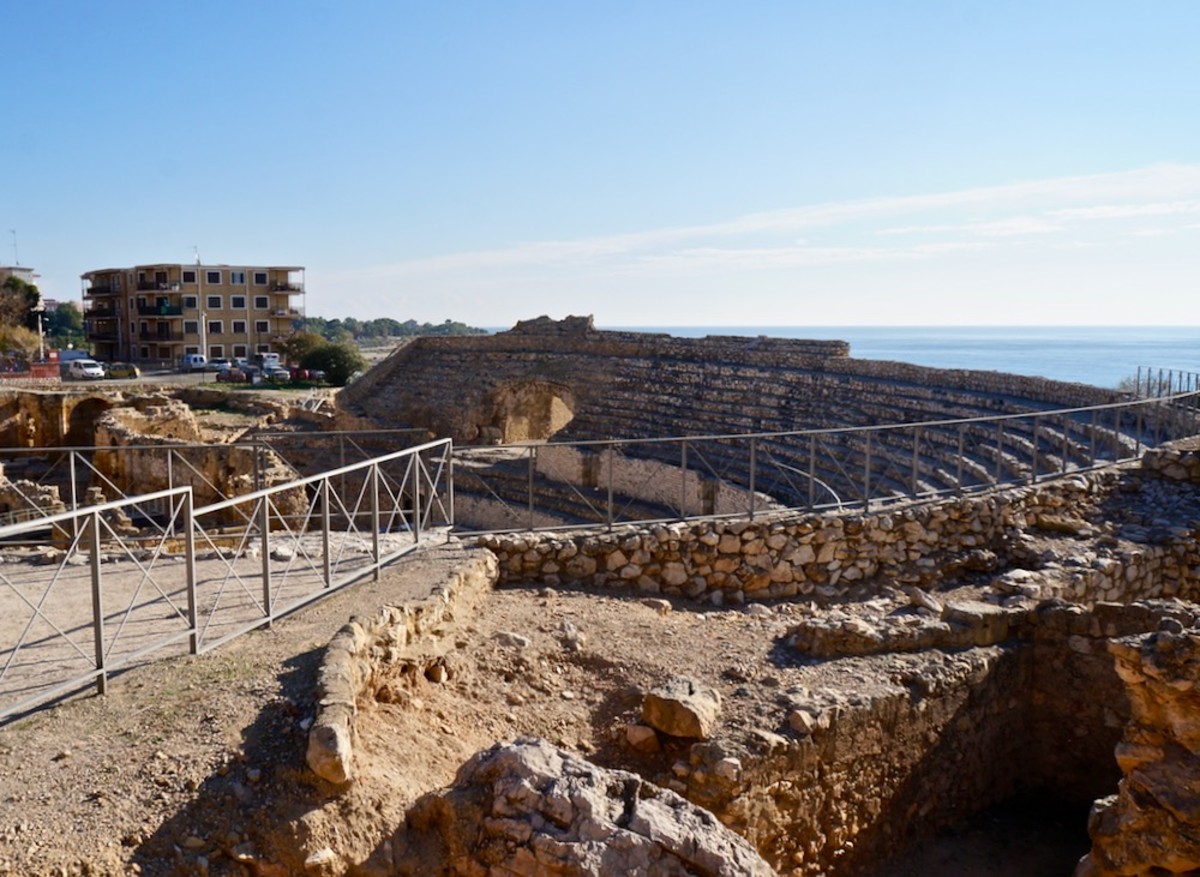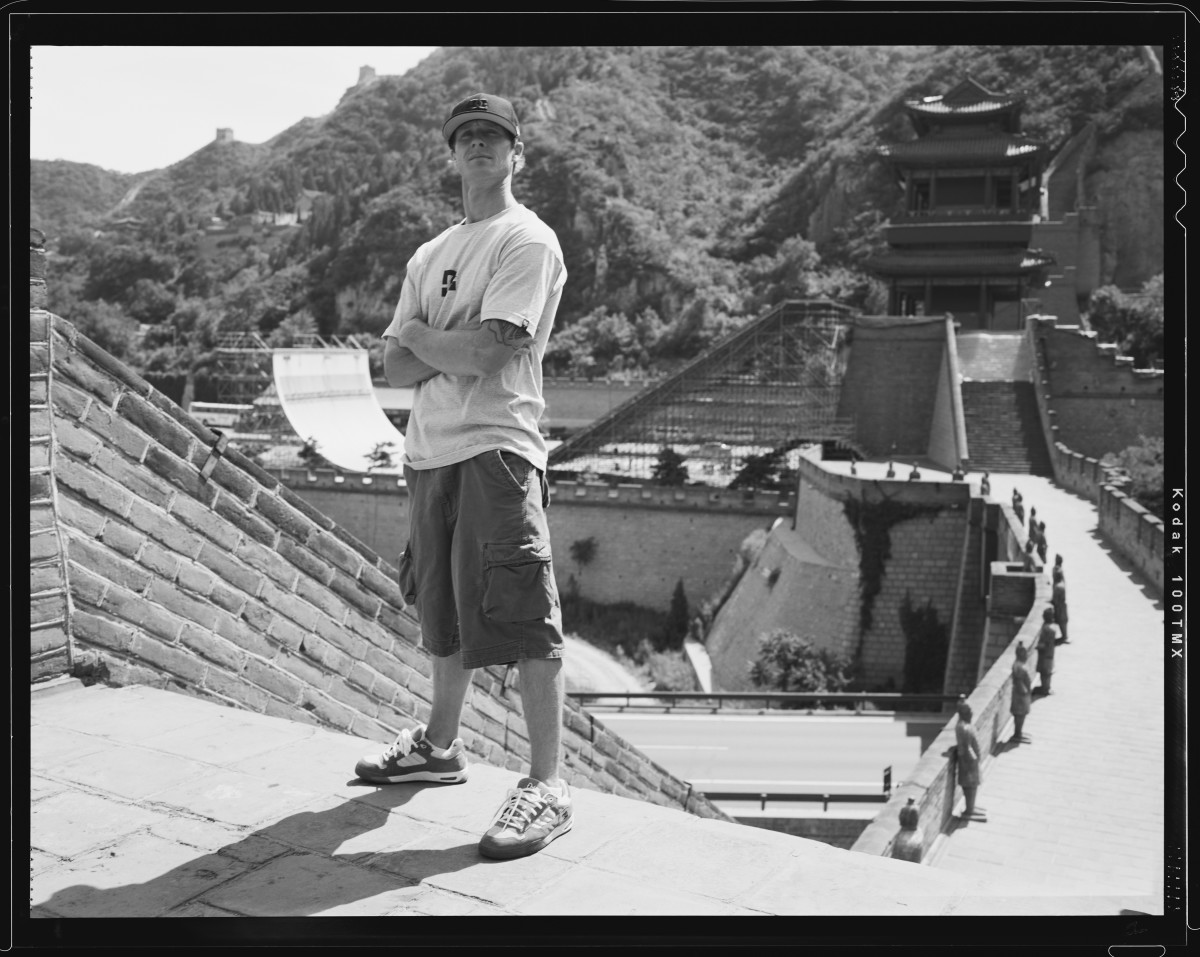A Travelogue for the Eye, Not the Mind: An In Depth Review of Persepolis
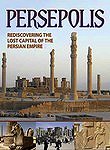
A Glimpse of an Empire
Persepolis: Re-discovering the Lost Capital of the Persian Empire (Balonier, 2008) is a film about looking at the ruins of the ancient city and recreating them. A travelogue, Persepolis takes a slow and methodical way of explaining the history of the city. It begins with the current ruins and a festival which brings millions to it for a picnic on a mass scale.
(PAUSE)
The people interviewed show great affection for the ruins.
(Show the festival attenders eating and walking around the ruins.)
The city was created by the great Darius I and began around 515 BC.; it was finished by his son Xerxes I.
(PAUSE)
The city was destroyed by Alexander the Macedonian in 330 BC.
(Show a section of the ruins still in rubble.)
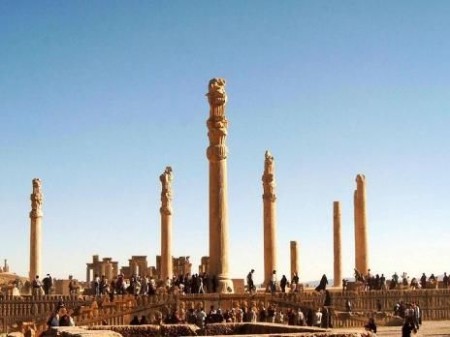

Blick in ein Weltreich
Originally created for German television, Persepolis has a very History Channel sensibility to it.
(PAUSE)
The ruin’s broken pieces are often juxtaposed with the digital recreations of what the city might have looked like.
(Show a door and a stunted pillar in ruins and a dissolve to a digital image of the door and full pillar in color.)
The digital images were created by architects Kourosh Afhami and Wolfgang Gambke.
(PAUSE)
The men used the original excavations reports from Friedrich Krefter and Ernst Herzfeld, who obtained them in the early 1930’s. Afhami and Gambke also used their own measurements to verify shape and texture.
(Show Gambke measuring a stunted pillar.)
All the information was put together to reveal what a beautiful empire Darius had created.
(Show the main stairs of the ruins in a long shot with tiny looking people walking up the stairs.)
The narrator explains the lengths the researches have taken to get the clearest picture of the past.
(Show a recreation of the stairs in full color, so the viewer understands how large and magnanimous it truly was.)
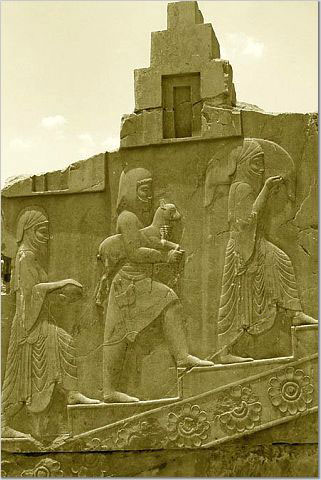
It Was Worth it, Huh?
The narrator explains how detailed the recreations are and that the ruins, including Darius’ home, have been digitalized to truly understand the scope of lost city.
(PAUSE)
This includes the various colors that brought the city to life.
(Show a digital recreation of the door and pillars in aqua, purple, yellow and red.)
These colors can be proven because they were taken from tabloids created on Darius’ orders.
(Show tabloids.)
Of course these tabloids were not found in Persepolis, but in a nearby city’s ruins, but the narrator reassures us it was probably the same color, because the tabloids were probably ordered by Darius.
(PAUSE)
Or his son, Xerxes.
(Show a tabloid.)
In the end, the narrator admits that they have little to no proof of what they just showed you…but isn’t it all so pretty? The digital work was good, huh?
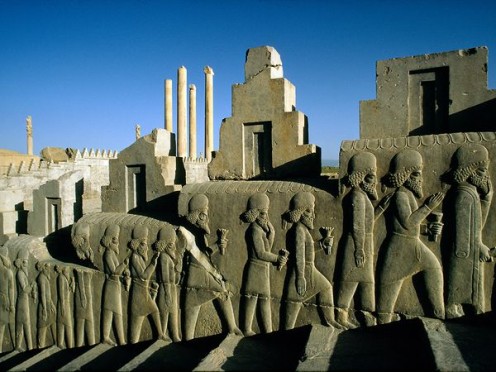
Slow Goings...
When writing this review for Persepolis, I wanted you to get a feeling for what it was like to watch the movie. If the History Channel is a favorite, it isn’t that much different from watching any of their digital recreations. Only, without battle scenes or exploding universes to keep my eyes busy. It is very much a travelogue. It looks at one city in ruins, recreates it partially and gives you a minimal amount of history attached to the scene they choose to show.

There are many issues that this movie possesses. They begin with a festival and picnic, but never return to it. Originally in German, some of the interviews with the experts come across as lacking in expertise. It could be because of the translation or the lack of expertise of the experts. Either way, it diminishes the validity of what’s being argued on their part. If you want to get real information about Persepolis, you should hit the library instead.
The pace of the movie (as kindly as I can put it) is painfully slow. Since the topic isn’t action filled, it would serve them to quicken the pace of something…anything in the film. Alexander destroyed the city, tell us something about that. They mention that he was saddened after he had destroyed the city, tell us something about that. Digitalize something about that. Instead, the viewer gets 3-5 minutes of ruins in silence. Again, no nice way to say it: boring.

There are some things that the movie got right. The “voice of God” was a narration by an English woman who comes across as educated and trustworthy. (She sounds like Rachel Weisz in The Mummy (Summers, 1999) Of course, she admits that everything she is telling us is speculation at the end, but until that point, her voice is the steady pace we follow. The only other good thing about the film is the digital reanimation.
It was beautifully done and did give me a picture of what could have been, though it might never have been. In the end it doesn’t matter, since it’s there to excite the imagination more than anything.
- Hessischer Rundfunk - Wikipedia, the free encyclopedia
German Public Broadcasting
In the end, the movie isn’t really about history, the Persians or the festival around Persepolis. It’s about the really cool digital recreations the German architects created to visualize Persepolis better. Not entirely too shocking when I looked up to see who sponsored the film: Hessischer Rundfunk (HR). Also known as: the country of Germany.
Apparently, they have ground breaking architects who are on the forefront of digital recreations as well as the historical archeologists who discovered Persepolis. Not quite in the area of propaganda, but definitely a film to mark the progression of great German architects, archeologists and digital artists. Propaganda is subtle here, but an effective way to promote Germany's assets while attempting to justify the cost associated with its use. They further highlighted their own historical archeological finds in Persepolis while showcasing their progression in digitalization. Don't be fooled by the faint smell of history, this is propaganda for what Germany accomplished in 2006. Sadly, this film is little more than that.


